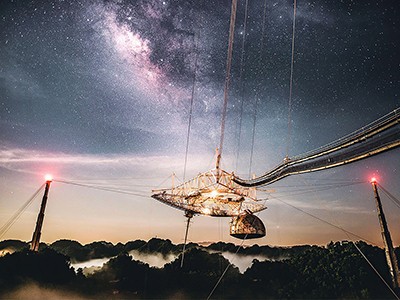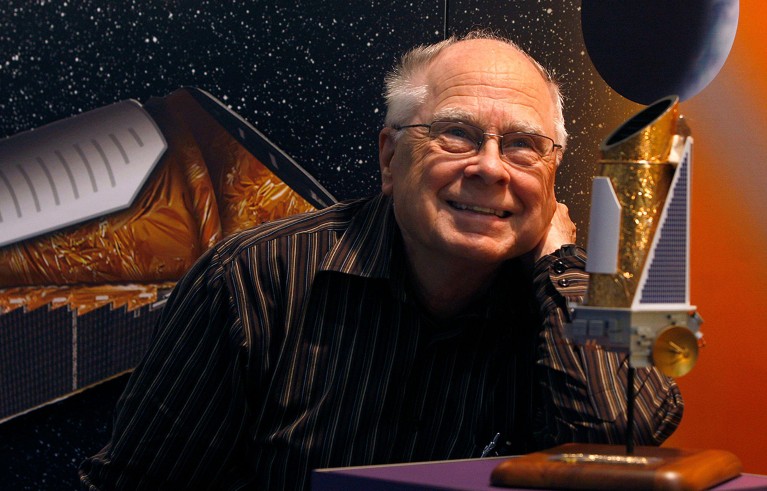Hidden in the Heavens: How the Kepler Mission’s Quest for New Planets Changed How We View Our Own Jason Steffen Princeton Univ. Press (2024)
In the mid-1980s, NASA engineer William Borucki faced a panel of in-house specialists. They told him to either justify an idea that many were calling crazy, or quit. His concept was for a space telescope dedicated to detecting extrasolar planets, or exoplanets, which orbit stars other than the Sun. It was an audacious idea, a decade before any such planets had been found.
Borucki had been developing the concept since the 1970s and was under pressure to stop wasting NASA resources. Yet he managed to convince the panel to let him carry on, and even persuaded several members to join him. Still, it would take until 2001 for the mission to be signed off, and another eight years before Borucki’s crazy idea sat on the launchpad.

Why did Earth’s first radio message to alien civilizations leave out half of humanity?
That spacecraft, the Kepler Space Telescope, remains humanity’s most prolific planet hunter so far, having spied thousands of distant planets and many more candidate ones. In Hidden in the Heavens, astrophysicist Jason Steffen — who joined the mission a year before it launched in 2009 — relates the story of Kepler and its surprising discoveries.
Kepler detected planets by identifying the dimming of light from a star as a planet moved across its face. Doing this is extremely hard — Steffen compares the process to looking down at Las Vegas from space and searching for a fly buzzing around a street light. The Kepler team had to prove that the telescope’s instruments were up to the task this before the project was given the green light. So deputy principal investigator David Koch designed a simple but clever experiment to do so.
Koch punched holes in a sheet of metal and illuminated it from behind to make an artificial field of stars. Wire was stretched across the holes, and an electric current was passed through it. The current warmed the wire, causing it to expand a little — just enough to simulate an Earth-sized planet crossing a distant star similar to the Sun. This test proved that, technically at least, the concept could work.
On the hunt
Next, real target stars had to be selected. In practice, more than one light dip would need to be detected to prove that a planet was orbiting the star and to measure the period. To find a planet on an orbit similar to our own, Kepler would have to monitor the star for several years to confirm that the dips repeated.
Scaled up, that meant that Kepler needed to watch one patch of sky, which ideally contained as many stars as possible. That raised engineering problems — it needed to distinguish light from individual stars in a dense crowd, avoid bright stars that would saturate the detectors and handle limitations to the bandwidth needed to send the data back to Earth. The final choice was a region with plenty of stars for Kepler to explore, but not so many that the telescope would be overwhelmed.

NASA engineer William Borucki drove development of the Kepler Space Telescope.Credit: Paul Chinn/San Francisco Chronicle via AP/Alamy
Once Kepler’s hunt began, decisions also needed to be made around how the science team worked together. And Steffen describes how practices held over from the lengthy developmental phases — such as being overly protective about who had access to data — led to uneven workloads. Some members “were swamped and just trying to keep their heads above water“; others “felt stuck twiddling [their] thumbs with nothing to do”. Steffen sought a solution, which in the end was simply ensuring that the whole scientific team could access the regular teleconferences. “‘The participating scientists went rogue’ and changed everything,” Steffen recalls a colleague joking.
Despite stringent planning, however, nothing involving space ever goes smoothly. And the team faced yet more decisions. One question was whether to sharpen the telescope’s focus after the first images seemed slightly blurry. It was designed to be adjusted, but moving any of the parts came with a risk. If the team did nothing, Kepler would still detect relatively large planets but would miss the smallest ones. If the scientists went ahead with adjusting it, results might improve — or there could be irreparable damage, and the entire mission could be jeopardized.
Whether to intervene with a spacecraft far from Earth is a dilemma faced by most mission leaders. For example, in April 2023 the radar antenna on board the Juice mission, led by the European Space Agency, failed to fully deploy after a pin jammed. Mission control delivered a mechanical shock that helped the antenna to unfold. In January 2024, researchers at the Japan Aerospace Exploration Agency and NASA made a different decision for the XRISM X-ray telescope, when a protective aperture door failed to open. The telescope is otherwise performing well, so the team has decided not to attempt to free the door for the moment.
It all came down to a simple question, Steffen recalls: “Do we risk it all for that twenty percent?” In the case of Kepler, the team did. The mirror was moved by a mere 40 micrometres and the images sharpened.






